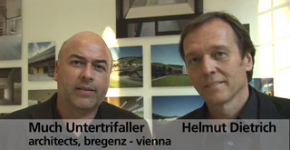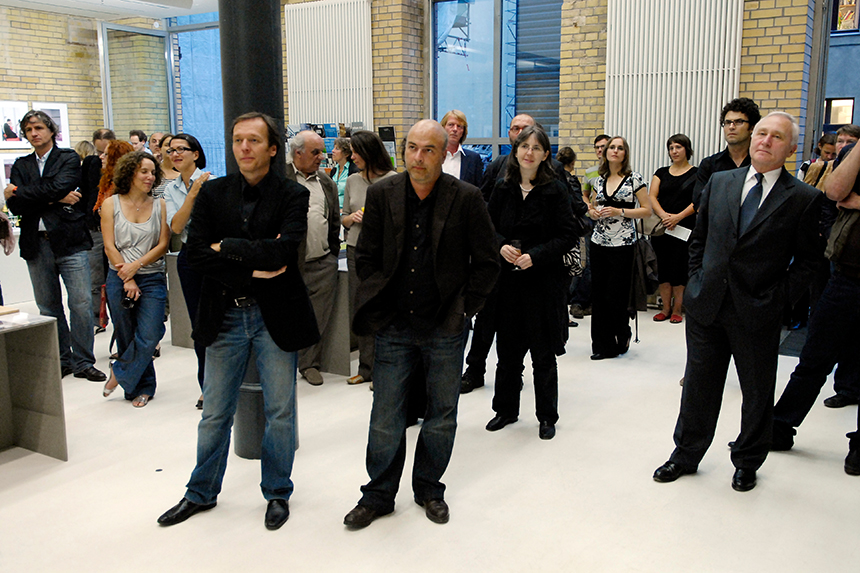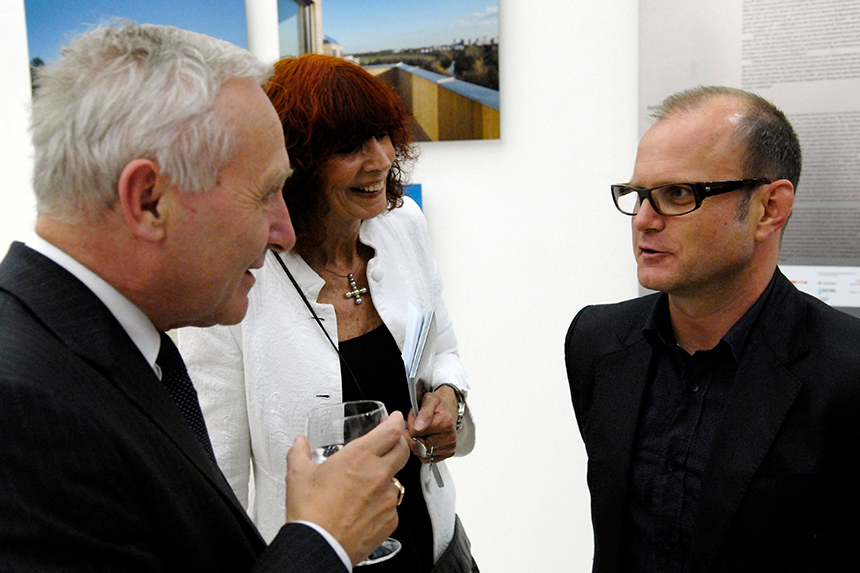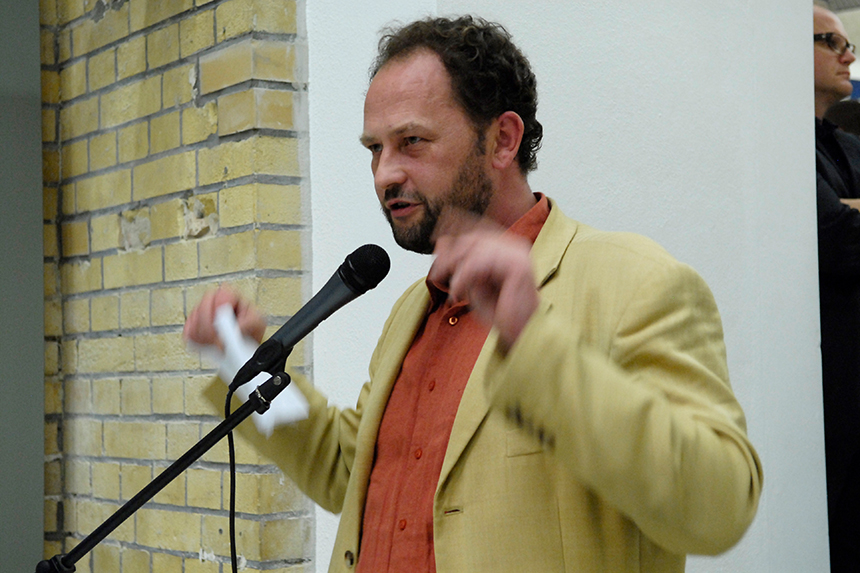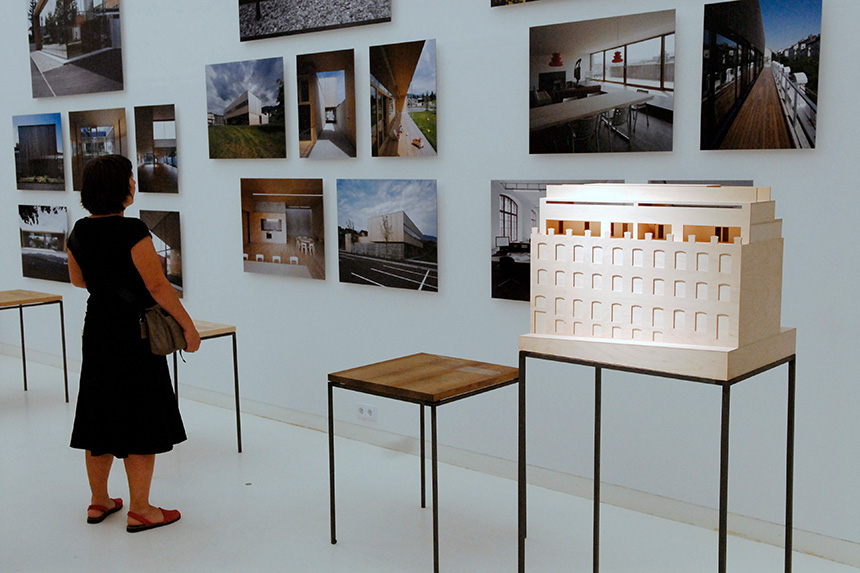In Vorarlberg, the westernmost Austrian federal state, the conditions promoting high-quality architecture are present to an exceptional degree. The “masters of the art of building” from the region who attracted international attention for the first time in the 1980s have now been succeeded by a second generation, whose members have returned to Vorarlberg after studying and practicing abroad, taking advantage of the areas’s advantageous conditions by realizing their projects without delay.
The architects Helmut Dietrich and Much Untertrifaller are among the most successful members of this successor generation. Over the past 15 years, they have won major competitions and produced a wide-ranging oeuvre that ranges from single-family homes to apartment blocks, from a local museum to a festival theater, from commercial enterprises to university sports facilities, and from café design all the way to comprehensive revitalizations of pre-existing architectural substance. Trained at Vienna’s University of Technology, both were influenced by the powerful personality of teacher and architect Ernst Hiesmayr (1920–2006). Even their early buildings testified to exceptional talents.
In 1992, they won the competition for the Bregenz Festival Theatre, and in 1994, opened a joint practice in Bregenz. The Festival Theatre – completely redesigned and expanded in two phases – was finished in 2006. Also completed was the spa and event center arlberg.well.com in St. Anton, the first passive energy school in Klaus/Vorarlberg, and the new event and music theater in Vienna’s Town Hall complex, as well as numerous commissions both large and small. Independently of the size of a given project, they have been consistently committed to quality, whether in overall conception, architectural expression, or the shaping of details. For several years now, the projects of D | U Architekten have been photographed by Bruno Klomfar.
A resident of the Vorarlberg and a well-known figure of the Vienna scene, Klomfar specializes in architectural photography. His keen eye for architectural form and space testifies to a profound capacity for empathy for buildings and topography, but also to an artistic perspective. Beyond their documentary value, his photographs of buildings amounts to visual commentaries. This exhibition featuring Vorarlberg architects Helmut Dietrich and Much Untertrifaller, then, is also a presentation of works by this important Vorarlberg architectural photographer. The exhibition, curated by Walter Zschokke, was initiated by an invitation from Kunst Meran (www.kunstmeranoarte.it), and was shown there early this year. For the exhibition, Dietrich | Untertrifaller have grouped their most important projects into five areas: 1) Education: the Klaus Secondary School, the Egg Kindergarten; 2) culture: the Bregenz Festival Theater, Vienna Town Hall, Inatura Dornbirn, arlberg.well.com, the Angelika Kauffmann Museum; 3) residence: Velag Areal Bregenz, Spinnereistraße, residential and commercial building, Bregenz Harbour; 4) commercial: VKW Areal Bregenz, Eurospar Bregenz, Flachgasse, Lehner-Schölmberger; 5) single-family homes: Haus R, Haus B, Haus K, Haus S, Haus A. Projects are displayed and explained by means of 137 photographs, 14 project tables, 7 models, 2 projections, and display texts.
Catalogue
An Aedes catalogue was published.
With a text by Otto Kapfinger
ISBN 978-3-937093-96-3
German/English
Price € 10,-
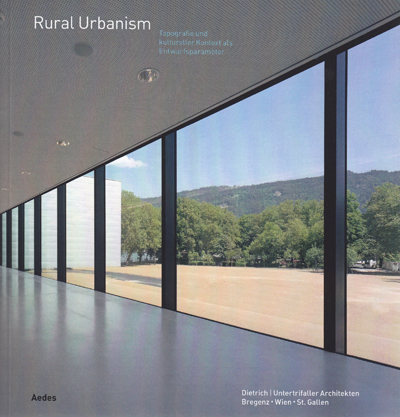
Diese Ausstellung wurde ermöglicht mit der großzügigen Unterstützung von:


